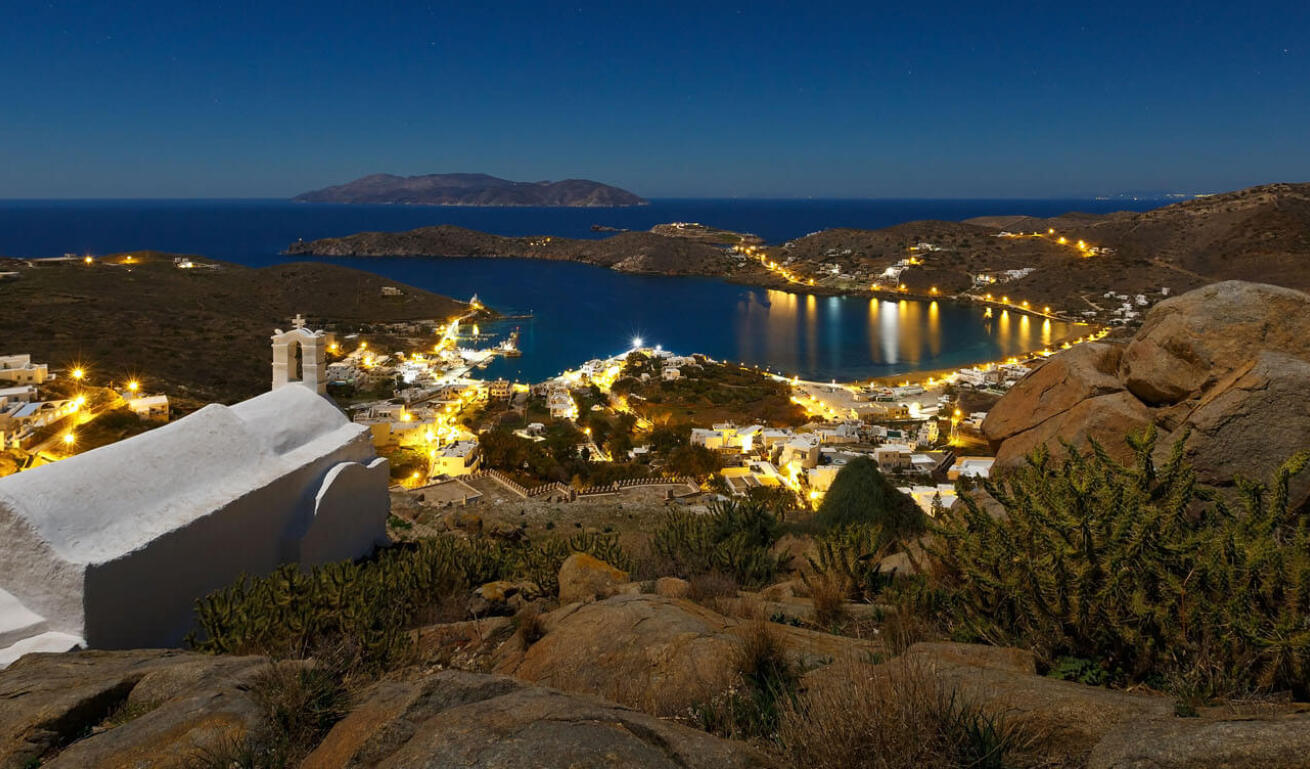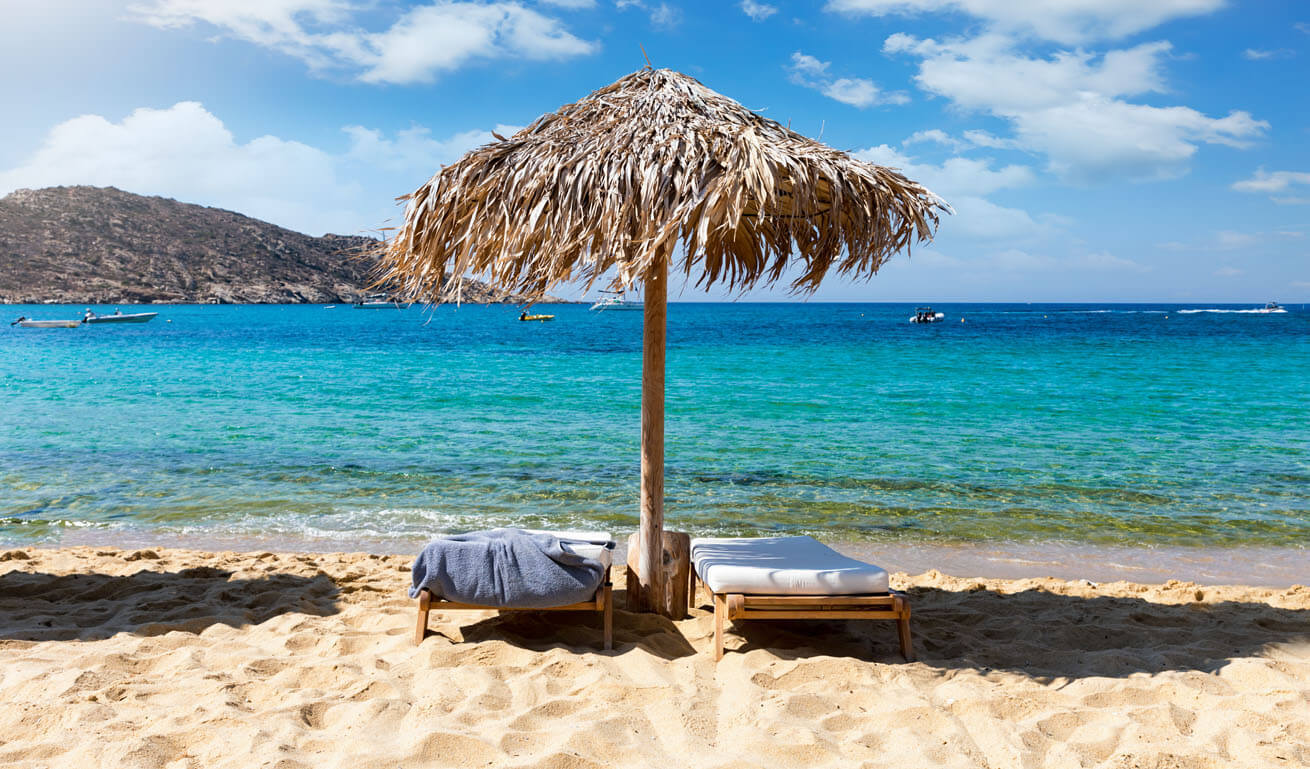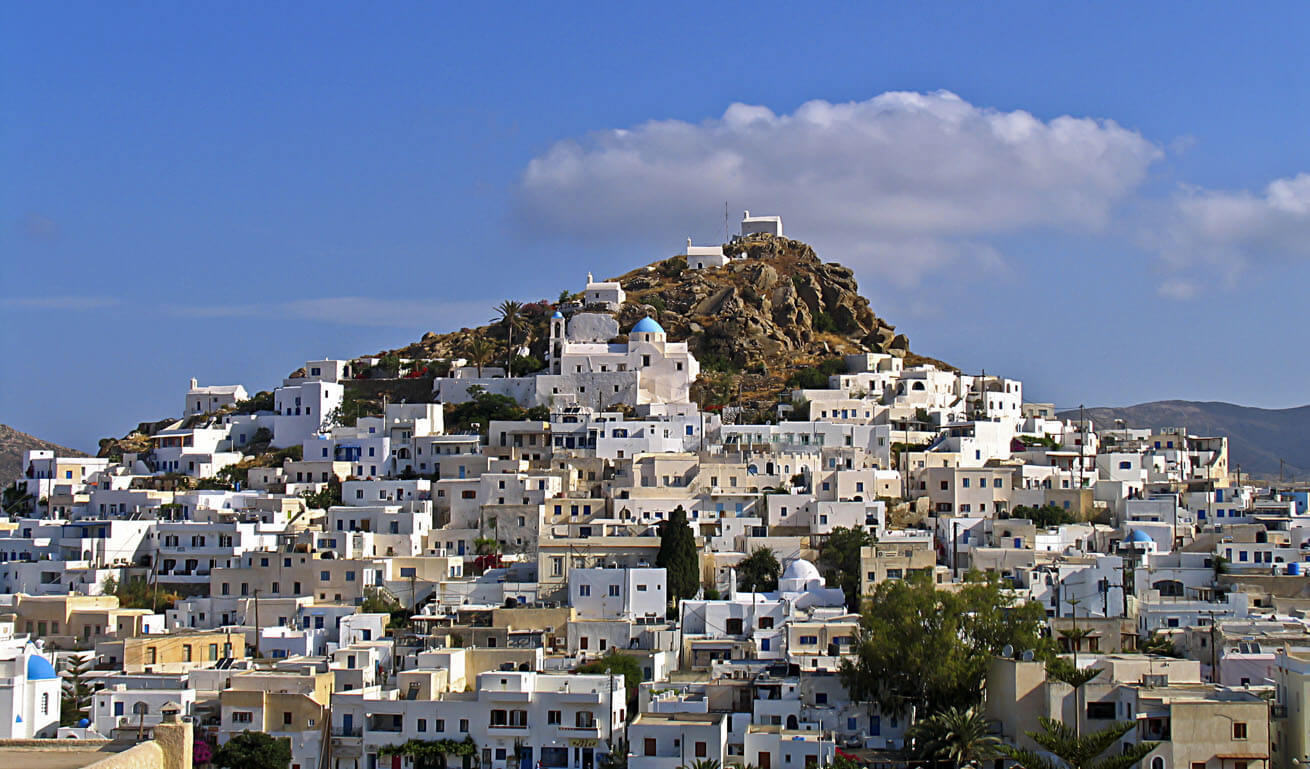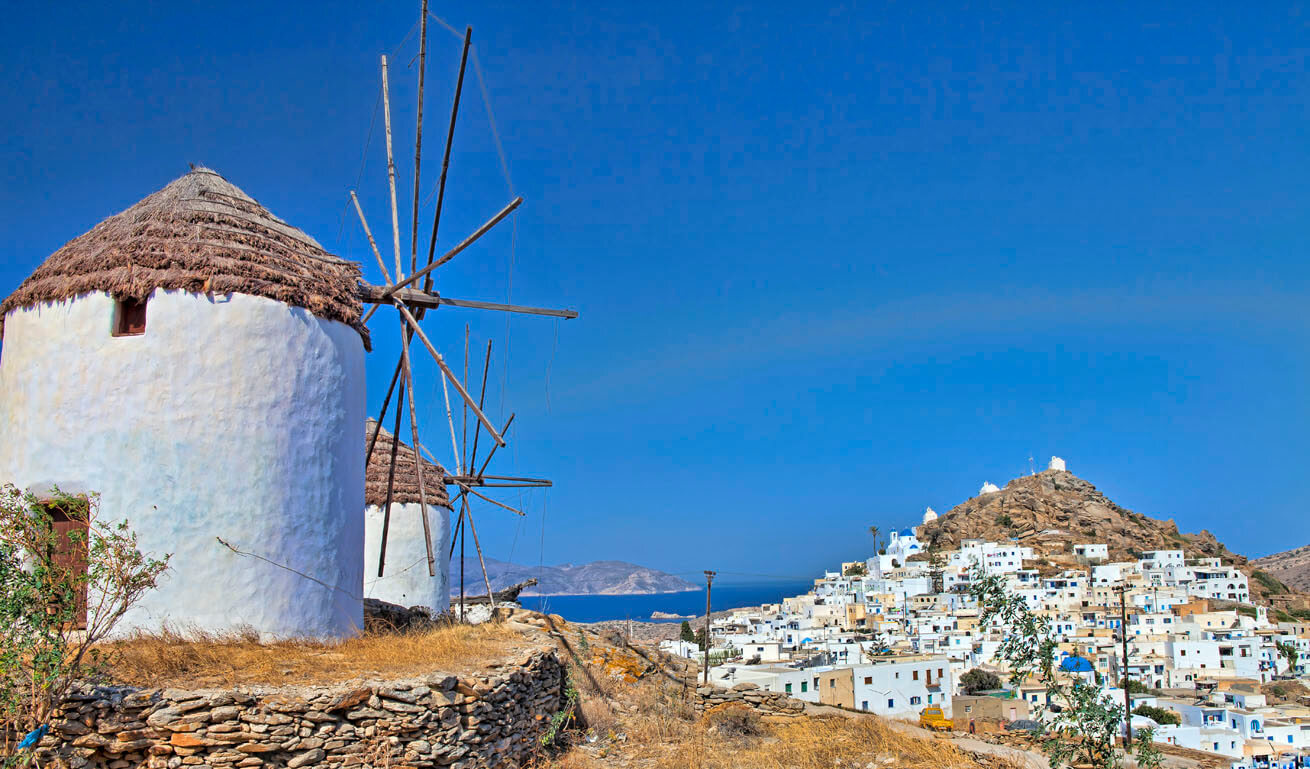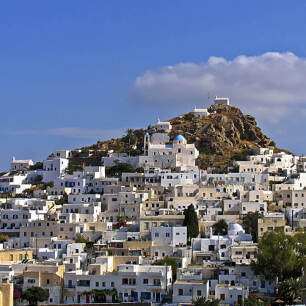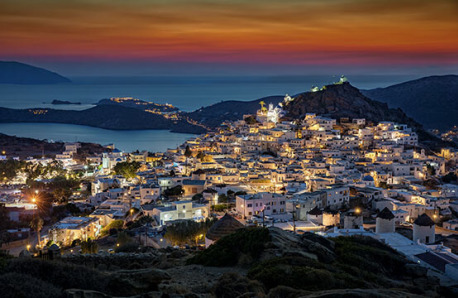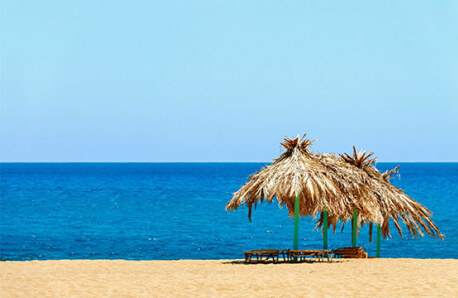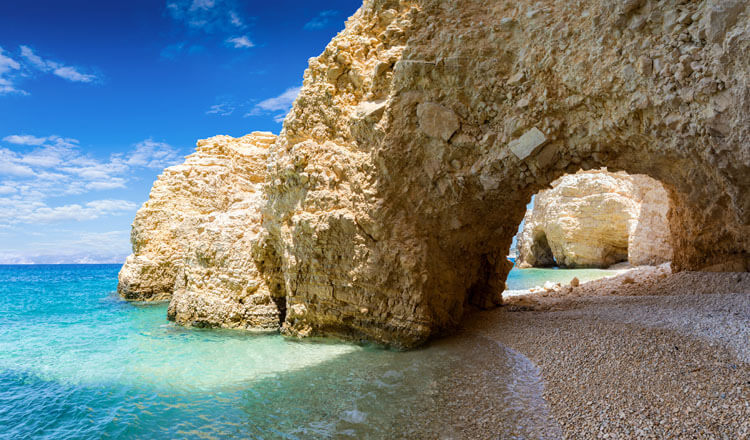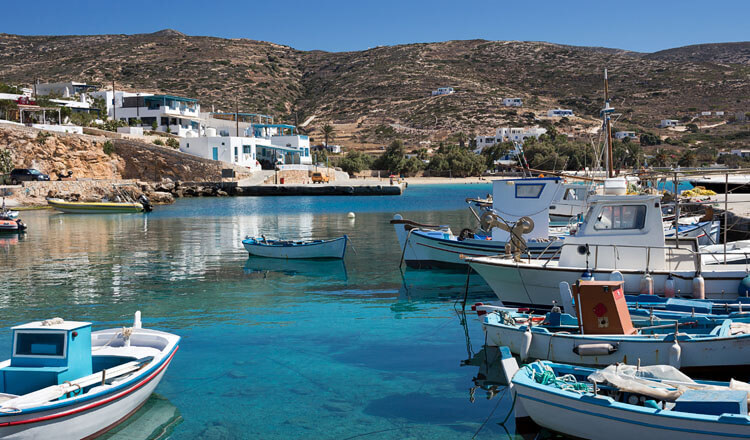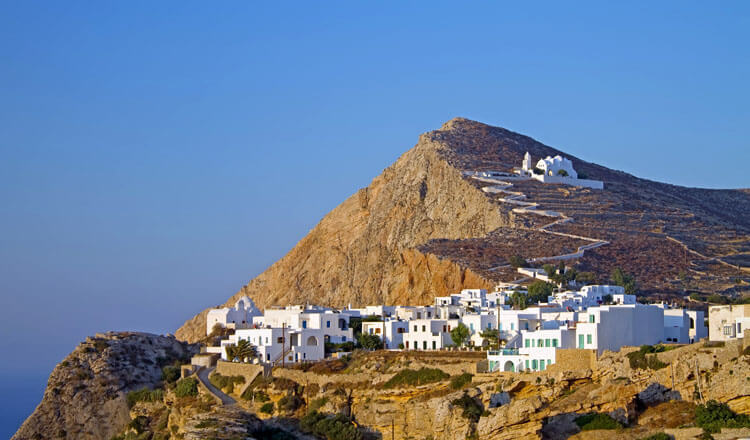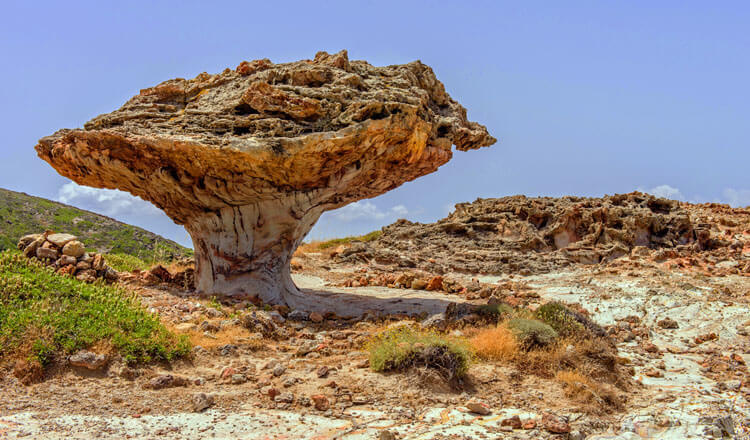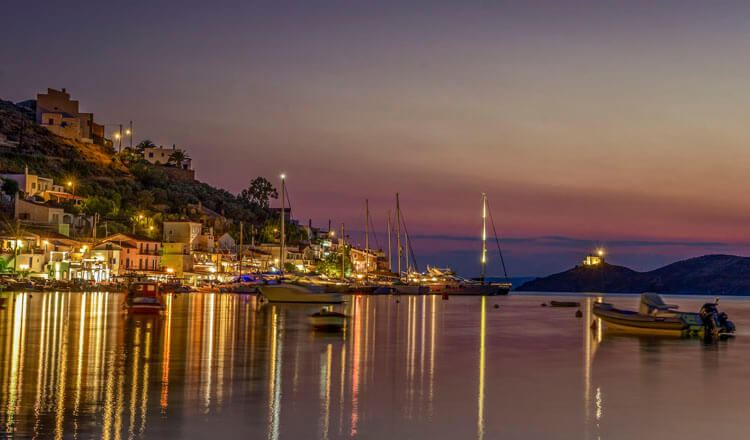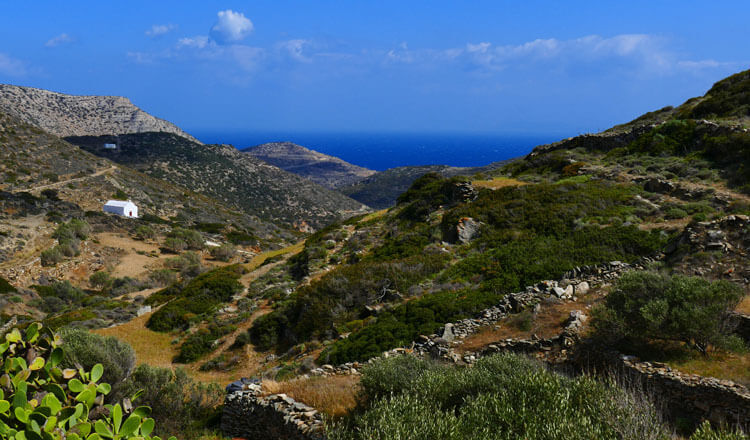
Ios
NOW
15 °C
Next 5 days
-
THURS
18 °C
-
FRI
17 °C
-
SAT
16 °C
-
SUN
15 °C
-
MON
14 °C
Source: National Observatory of Athens /meteo.gr
According to ancient tradition, Ios was Homer’s burial land as well as his mother’s homeland. The island’s name, Ios, comes from the ancient word “ion” that means flower referring to the large amount of blossoms found here during antiquity.
Unique Experiences
Touring the Island
This is one of the finest examples of a traditional village built according to Cycladic architecture. Snow-white little houses, picturesque arcade-covered alleys (stiyadia), the twelve windmills, churches with arched belfries and light blue domes create a unique residential area. Chora’s covered alleys is where the “Kounia”, an ancient local custom, takes place every year in the month of May, as follows: young men build swings for the young ladies who sit and rock themselves while listening to traditional love songs being sung to them in the form of a dialogue.
The most significant chuch among the 365 of them on the island is Panagia Gremiotissa, built on the edge of a cliff in Chora’s highest spot, affording an amazing view of the open sea. This place is the centre of one of the biggest religious feasts on the island, which takes place on August 15th, involving a procession in Chora with the icon of the Mother of God placed at the forefront. Later on, a traditional festival takes place with local island-style singing and dancing till dawn!
Within Chora see the ruins of the Mediaeval fort (1397), built by Marco Krispi, ruler of the island. Visit the ancient town of Ios built on the hill-top of Chora, where ruins of structures, roads and sewerage network are unearthed as well as the churches of Agios Nikolaos, Evangelismou and Agias Aikaterinis, which is believed to be built on the spot where once was the temple of Pythios Apollo.
Get acquainted with Chora’s famous (instagramable) windmills as well as Psaropyrgo Tower at Plakotos dating back to the Hellinistic period. Don’t miss a stop by the 20th c. Amiradakeio Megaron, a neoclassical building that houses the City Hall as well as the Archaeological Museum and the Museum of Modern Art, which showcases a Jean-Marie Dro art collection.
Skarkos, an early Cycladic period settlement, (2,800 BC) denotes the significant presence of man registered as far back as the early antiquity. The exemplary restoration and promotion of this archaeological site has been awarded a prize. A rich collection of finds from the settlement as well as antiquities going back to the island’s historical course are on display in Chora’s remarkable Archaeological Museum.
Palaiokastro stands on the northeast side of the island and used to be a fort during the Byzantine period. It served as an observatory to control the seaways from Constantinople down to Crete. Long-distance communication between forts on the islands of Naxos, Amorgos and Santorini were made with fire signals.
Ormos (aka Gialos) is the island’s main port.See the church of Agia Irene and the ruins of an Early-Cycladic Period settlement on Skarkou hill. Don’t miss Koumbara beach where you can view one of the best sunsets around Greece.
Mylopotas is a popular one kilometre long sandy beach. Visit the small church of Panagia (Virgin Mary) and the reservoir. Follow the fascinating route from Mylopotas to Maganari.
At Maganari you’ll come across remarkable beaches with blue-green waters where part of the film "Le Grand Bleu" was shot. Go see the picturesque coves of Treis Klisies, Kalamos and Plakes with the beautiful shores as well as the Monastery of Agios Ioannis and Kalamos 7.5km NW.
Ramble through Agios Theodotis where ruins of a Roman aqueduct are found and follow the impressive path from the old village towards Gefyri.
Last but not least, visit the seaside village of Psathi where you will see the ruins of Palaiokastro fort (7th - 8th c.) on the top of a rocky hill.

BY SEA
Ios is connected to Piraeus and other Aegean ports. Conventional ferries make the route "Piraeus - Ios" in about 6.5 hours while high-speed ones in about 4.Ios is also connected with the ports of Lavrio and Rafina's.
